Players can be underappreciated for a number of reasons. They may spend much of their career in the shadows of another great, they may lack the flair of other players, or perhaps the selectors simply don't give them the chances they deserve.
There are also many players who were lauded in their day, but have since been forgotten.
Victor Trumper was immortalized through George Beldam's famous photograph of him lunging forward to play a straight drive. However, his statistics make it difficult to see why he was so celebrated in his day. Other players have not been as lucky as Trumper. Instead, their achievements have faded into history.
For the sake of balance, this article selects one player from each of the 10 established Test playing countries. This ensures that the players who make it to the list have done so for diverse reasons, as the divergent history's of the teams means players go underappreciated for different reasons.
For example, South Africa had many cricketers who the cricketing world saw all too little due to apartheid. Much of their cricketing history before they returned as a Test side has now largely been forgotten, along with the players who were part of it.
Yet, other teams like Bangladesh and Zimbabwe with much shorter histories as Test-playing nations, see players go undervalued for different reasons. With these sides still adapting to the international arena, the players who have fought to make them competitive often fail to receive the praise they would if they played for a stronger nation.
Alternatively, many of the more established nations have at times fielded teams so full of talent that certain players were overlooked. For example, in the 1980s the West Indies absurd amount of pace bowling talent meant that players who should have become household names barely managed to make it to the team.
The reasons for certain players failing to achieve the attention they deserved varies, but all made contributions to the game that should be praised.
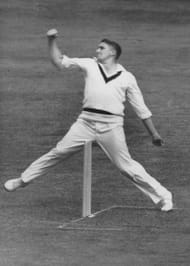
Australia: Alan Davidson (1328 runs @ 24.59, 186 wickets @ 20.53)
Alan Davidson started his career slowly. After 11 Tests he had never been on the winning side, nor had he ever taken more than two wickets in an innings. In some respects, he was fortunate to maintain his place in the side, particularly when Australia already had two quality all-rounders in Richie Benaud and Keith Miller.
However, in his following 33 Tests, Davidson would enjoy 14 five-wicket hauls, contributing some of the greatest performances of his generation.
The renown tied Test between Australian and the West Indies epitomized Davidson's brilliance, as he took 5/135 and 6/87, while also scoring 80 in the fourth innings when Australia looked destined for defeat.
Davidson never achieved the same level of acclaim as Benaud and Miller, although perhaps, his best comparison would be to a left-arm pace bowler in Wasim Akram.
Akram is one of the game's greats, but it is noteworthy that Davidson had a better batting average than Akram's 22.64, and also a better bowling average than Akram's 23.62.
Comparing players from different eras is a dangerous undertaking, but it is also notable that the era Davidson played in makes his achievements all the more impressive.
Davidson played most of his Tests in a time when batsmen were dominating the game. It is telling that there are few other great bowlers from the late fifties and early sixties, but it is also often overlooked that while Davidson played in a strong Australian side, he also led what was often a fairly weak pace attack.
During the tied Test, for example, Davidson bowled a total of 54.6 overs (there were eight balls in an over at the time). Of the other Australian pace bowlers, Ken Mackay bowled the second most overs with just 24.
Without Davidson, Australia's bowling line up would have been significantly weaker, and that this is overlooked perhaps explains why Davidson is underappreciated.
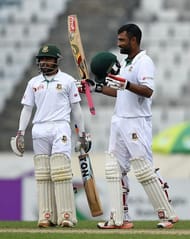
Bangladesh: Tamim Iqbal (4049 runs @ 37.84)
Bangladeshi cricket has come a long way since Tamim Iqbal's debut in 2008, and few players have had as big a hand in their growth as Iqbal.
It is indicative of his contribution to the national team that in his Test debut, he top scored in both Bangladesh's innings, with 53 and 84. Despite the New Zealand side they faced being a fairly weak one, Bangladesh were routed in just three days.
While Bangladesh now have a side with several fine players, including Shakib Al Hasan, Mushfiqur Rahim, and Mustafizur Rahman, at the time of Iqbal's debut, many of Bangladesh's players were struggling to fulfil their potential.
Bangladesh's captain during that game, Mohammad Ashraful, is a testament to this. In 2001, Ashraful had a debut Test even better than Iqbal's, scoring a sensational century against a Sri Lankan bowling attack that included Chaminda Vaas and Muttiah Muralitharan.
However, Ashraful's Test career would end in ignominy, as he would admit to involvement in spot-fixing, and finish his career with an average of just 24. Iqbal, conversely, is currently the country's all-time leading run scorer.
Iqbal perhaps does not possess quite the same level of talent as the likes of Al Hasan, Rahim, and Rahman, which may explain why he does not receive the same level of admiration of some of his fellow countrymen. But he has made the most of his talent, and subsequently has more Test runs than Al Hasan and Rahim, despite having debuted after them.
It is also worth noting that Iqbal is only 29, and may still break many more records for Bangladesh.
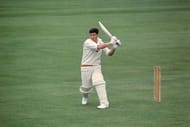
England: Ken Barrington (6806 runs @ 58.67)
Barrington seems to feature only sporadically in conversations about the greatest batsman of all time, but his superb record shows that this should not be the case.
Of all the batsmen to have scored 5000 Test runs, only Steve Smith and Sir Donald Bradman have higher averages than Barrington.
Barrington was initially quite an entertaining batsman. But he was not highly effective. In the early 1960s, over five years into his career, Barrington was only averaging in the low forties. He was a good batter, but not a brilliant one.
Barrington began to adapt his game to favour a more conservative approach. Limiting his stroke-play would pay dividends for Barrington, as from 1963 onward he would average 63.29. But this more defensive style of play is probably why Barrington does not get the recognition of many other batters with an inferior average.
It is not just that he didn't play in a particularly entertaining way, but also that his conservative methods were seen to be indicative of many of the problems in English cricket.
Barrington should, however, be seen as someone who earned his place among cricket's finest batsmen by having the intelligence and humility to make significant changes to his game.
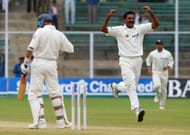
India: Javagal Srinath (236 wickets @ 30.49)
Being a pace bowler in India is a thankless task. Many of the game's greatest pace bowlers have struggled with the pitches and the weather, making those who have found success there all the more worthy of praise.
Despite leading India's pace attack for the best part of a decade, Srinath doesn't often receive the recognition he deserves. This is because Srinath's record can't be fully appreciated until put in context.
Only three Indian pace bowlers have more Test wickets than Srinath: Kapil Dev, Zaheer Khan, and Ishant Sharma. Yet of the four, Srinath's bowling average is second only to Kapil Dev's, whose is fractionally better at 29.65.
Furthermore, while Khan and Sharma averages in India are 35.88 and 33.60 respectively, Srinath's average in India was just 26.61.
Srinath was also very consistent, particularly from 1998 to 2001, where he averaged between 26 and 28 with the ball for four years running.
During these years, it was India's batting line-up that captured the imagination, but Srinath's role in leading the team's pace attack made him one of their most crucial players.
He also played in an era of great pace bowlers, such as Curtly Ambrose, Courtney Walsh, Glenn McGrath and Alan Donald. Srinath, therefore, may have been overshadowed by his fellow pace bowlers, even though they spent most their time in conditions that were far more favourable to their craft.
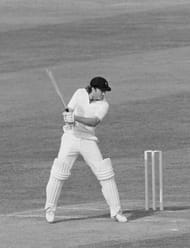
New Zealand: John Wright (5334 runs @ 37.83)
New Zealand cricket was all about two men in the 1980s: Martin Crowe and Sir Richard Hadlee. There was an obvious gulf in talent between this pair and the rest of the New Zealand side. None came closer to bridging this gap other than John Wright.
While Martin Crowe would blow opposition bowlers away with classy stroke-play, Wright would blunt them with an effective, albeit not particularly attractive, defence.
In fact, on many occasions, Crowe was protected from the new ball by Wright, who opened the batting in a time where there was no shortage of quality pace bowlers.
Because of some games against Pakistan where the number of deliveries Wright faced was not recorded, his strike-rate is not known, but from the available data, it is safe to assume it lay somewhere in the mid-thirties.
Clearly, Wright was not an entertainer. However, he was effective, and his consistency was almost unparalleled.
Wright took a few years to adapt to Test cricket, but then from 1981 through to his retirement in 1993, Wright managed to average 39 or above in all but two calendar years. This is particularly impressive considering New Zealand often played fewer games than other more established Test cricket nations.
Furthermore, Wright managed to score a century against each of the six nations he faced. Wright can, therefore, be viewed as underappreciated for similar reasons to Srinath, as the role he played for his team was a vital one, but not one that would win him many accolades.
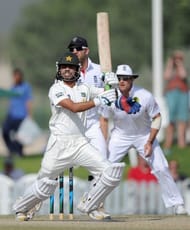
Pakistan: Fawad Alam (250 runs @ 41.66)
Joe Root, Virat Kohli, Kane Williamson and Fawad Alam; only one averages over 55 in first-class cricket. The player is Fawad Alam, whose lack of chances in Test cricket is among the great modern mysteries such as the Bermuda Triangle and the identity of the Zodiac Killer.
Now 33 years of age, Alam has been limited to just three Test matches, despite scoring 168 on debut, despite a first-class average of 55.42 and a list A average of 48.82, and despite having 11,141 first-class runs to his name.
Alam's non-selection has confounded many. Some fans have even gone as far as suggesting that Alam should take his case to the Supreme Court of Pakistan.
The only feasible reason for Alam not being picked is that he is not a very graceful player. His technique is unorthodox at best, and certainly not something any coach would use to coach youngsters. But it is also a technique he has used for 152 first class games, and it has served him just fine.
Alam is also far from the only player to find success with an unusual technique. Steve Smith, for example, has made 6199 Test runs at an average of 61.37 with a similarly unorthodox technique.
There is no doubt Alam has been consistently underappreciated by selectors, but as a result, he is also underappreciated in the cricketing world.
Alam may be one of this generation's finest batsmen - his statistics would certainly suggest this is the case - but he will likely end his career with many cricket fans outside Pakistan not even knowing who he is.
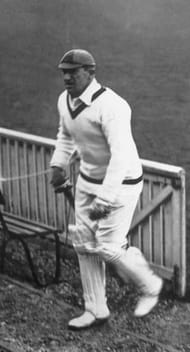
South Africa: George Aubrey Faulkner (1754 runs @ 40.79, 82 wickets @ 26.59)
While many brilliant South African players such as Graeme Pollock, Mike Procter, and Barry Richards had their careers cut short by apartheid, Aubrey Faulkner might still be the most underrated player from the country.
Aubrey Faulkner may be a player long forgotten by many of today's fans, with his Test career spanning between 1908 and 1924, but it could be argued that he is second only to Bradman. Such may seem a lofty claim at first, but a closer examination into Faulkner's career gives it credibility.
Faulkner started his domestic career as a player who was functional at best. He batted low down the order, and occasionally bowled some medium pace. However, in 1904, a South African spin bowler named Reggie Schwarz came up with a new type of delivery which became known as 'The Googly'.
Schwarz taught Faulkner how to bowl this magical new delivery and it changed his career. Faulkner earned a call-up to the national team when South Africa were still looking for their first win in Test cricket. He would take 2/35 and 4/36 to help South Africa win by a single wicket. Faulkner had transformed from a decent medium pacer to a deadly spin bowler with an unreadable wrong-un.
Faulkner would also become a great batter, his finest achievement being the 1910-11 test series against Australia where in five matches he made 732 runs at 73.20. He was at times South Africa's best bowler and best batter simultaneously.
He only played one Test after World War One, but had he played during another time, he would almost certainly have received much greater recognition.
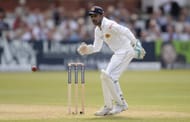
Sri Lanka: Prasanna Jayawardene (2124 runs @ 29.50, 124 catches and 32 Stumpings)
Adam Gilchrist and Kumar Sangakkara are two of the most entertaining players cricket has ever seen. However, it would not be surprising if Prasanna Jayawardene winces a bit whenever he hears their names.
For many years, there had been a growing emphasis on wicket-keepers' ability with the bat, but Gilchrist's explosion onto the international scene can be viewed as the moment where a wicket-keeper's batting became even more important than their keeping.
Sangakkara followed this trend, acting as someone who kept wicket even though he could make the side for his batting alone. Many wicket-keepers have lamented this shift, but few have felt it as keenly as Prasanna Jayawardene.
This is because Jayawardene was one of the cleanest glove-men of his time. His quick feet and quick hands meant he was a bowler's dream, and in another era, he would have been a selector's dream.
Had Jayawardene played a few decades earlier, he may well have been seen as the Sri Lankan equivalent to Alan Knott or Syed Kirmani. But instead, he would spend 15 years in and out of the Sri Lankan team, his position never fully secured.
Jayawardene was not a bad batsman either. Like Kirmani and Knott, he certainly contributed with the bat. His four centuries are a testament to this. But cricket's change in priorities meant that Prasanna Jayawardene was never fully seen for the talent that he was.
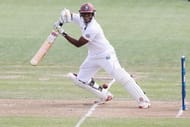
West Indies: Shivnarine Chanderpaul (11,867 runs @ 51.37)
This is by far the clearest example of one player being undervalued due to living in the shadow of another. Chanderpaul is one of the greatest batsmen to have graced the game, but he spent much of his career being viewed as an understudy to Brian Lara.
This is perhaps surprising when the runs they scored and their averages are nearly identical, but Chanderpaul's method of batting was quiet whereas Lara's was operatic. Lara would decimate opposition teams in a matter of minutes, but with Chanderpaul, it was death by a thousand cuts. Yet he was no less effective.
Chanderpaul's Test career commenced in 1994, just as the West Indies were losing their spot at the top of the cricketing world. His career would last over twenty years and include some of the greatest fighting innings the game has seen.
By the time Lara retired in 2006, Chanderpaul was already seen as a very strong batsman and a fierce competitor. But it was after Lara's retirement that he reached his peak.
Chanderpaul averaged over 100 in each of the two years following Lara's retirement. Much of the latter part of Chanderpaul's career was also played for a West Indies team that was a shadow of its former self.
While the likes of Sir Vivian Richards and Gordon Greenidge saw their best innings lead their country to victory, Chanderpaul's best innings often only helped in limiting the damage.
Chanderpaul's innings therefore often don't carry the same mystique, but in many ways, they are more important, as there were plenty of times when the West Indies could easily have won without the help of Greenidge and Richards, but they relied on Chanderpaul frequently.
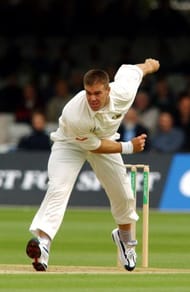
Zimbabwe: Heath Streak (1990 runs @ 22.36, 216 wickets @ 28.14)
Andy Flower and Heath Streak in the 1990s were similar to Crowe and Hadlee in the 1980s. They were players on another level to their teammates, probably to an even greater extent than Crowe and Hadlee.
However, while it is commonly mentioned that Flower would have received more praise had he played for a stronger side, Heath Streak's incredible career is often overlooked.
Streak's 216 Test wickets are the most taken by any Zimbabwean, with Ray Price next on the list with just 80 wickets.
These were quality wickets too. Streak averaged under 30 against some of the strongest test nations of the time, including England, India, Pakistan, and the West Indies.
He also had a brilliant record against some formidable batsmen. He dismissed Shivnarine Chanderpaul five times in just nine innings, and Sanath Jayasuriya five times in 11.
Batsmen in the top seven also accounted for 75.5% of his career wickets, showing that while his bowling average of 28.14 is impressive, it does not truly do him justice.
Brand-new app in a brand-new avatar! Download Cric Rocket for fast cricket scores, rocket flicks, super notifications and much more!
